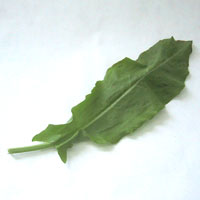Search Healthnotes
Sorrel

Preparation, Uses, & Tips
In the spring, when sorrel’s rather sour flavor is mildest, it is used in salads and cooked as a vegetable. A few slivered young sorrel leaves add a refreshing touch to any sandwich. The fresh young leaves can be combined with other herbs in salads, or cooked and served like spinach, usually in combination with either Swiss chard or spinach. When more mature and acidic, sorrel is used to flavor cream soups; it’s also pureed as an accompaniment for meats and vegetables, and used in omelets and breads.
To puree sorrel, wash the leaves and pull off the stems. Then lay about two dozen leaves parallel in a neat pile, roll into a fat cigar, and shred the leaves crosswise with a knife. Place these shreds in a pan with a generous teaspoon (5g) of butter—or a little water, olive oil, or cream—for each quarter pound of leaves. Over low heat with occasional stirring, the leaves will melt into an olive green puree in about 15 minutes. The puree can be strained to remove any leaves, if you like.
Cream of sorrel soup is a famous Old World dish, and salmon with sorrel sauce is a popular dish in France.
Due to its high acid content, sorrel can cause a reaction in some metals. When cut, it will discolor a carbon steel knife, as well as aluminum or iron cooking pots and silver serving dishes.
Copyright © 2026 TraceGains, Inc. All rights reserved.
Learn more about TraceGains, the company.
The information presented in the Food Guide is for informational purposes only and was created by a team of US–registered dietitians and food experts. Consult your doctor, practitioner, and/or pharmacist for any health problem and before using any supplements, making dietary changes, or before making any changes in prescribed medications. Information expires December 2026.











